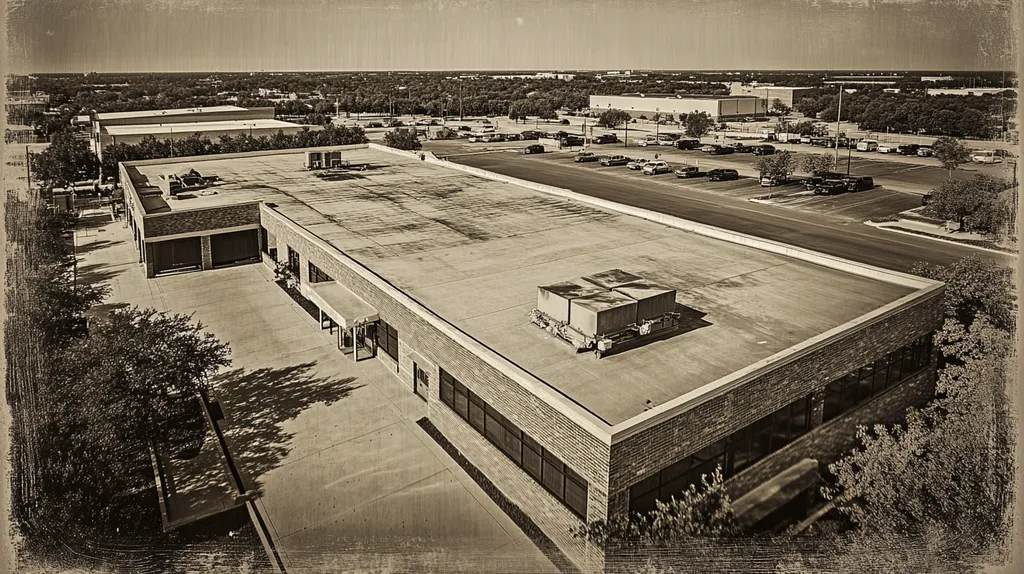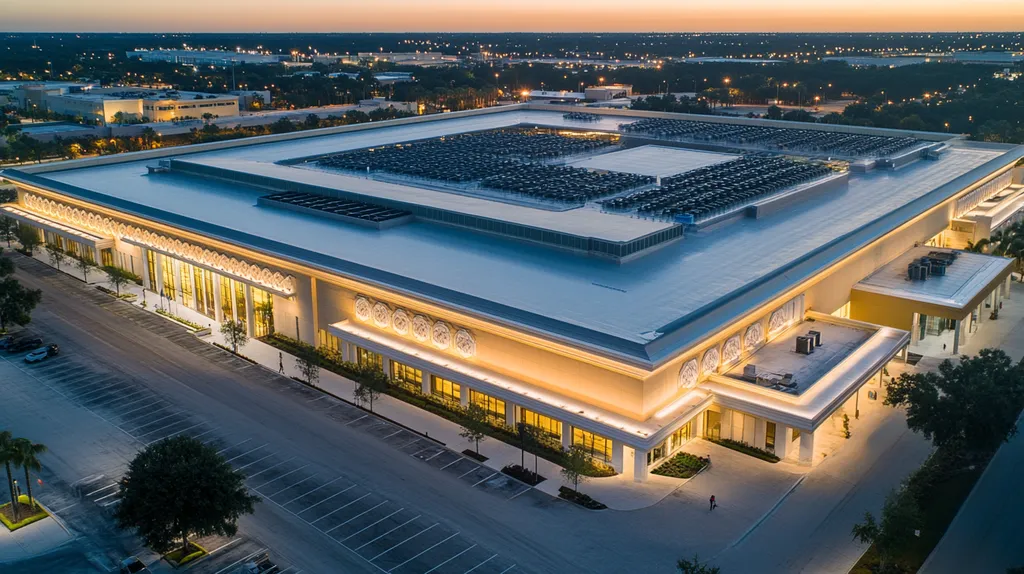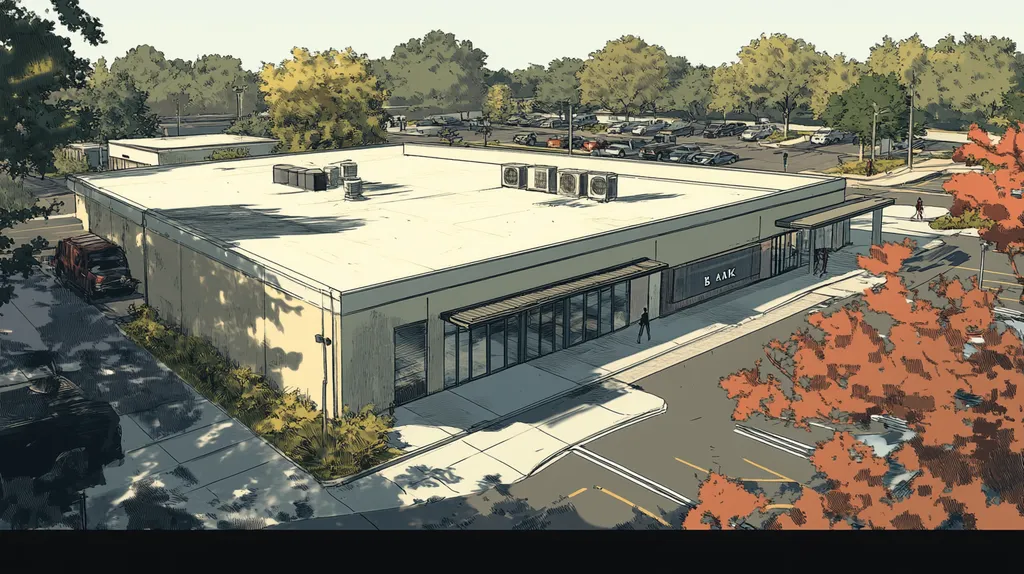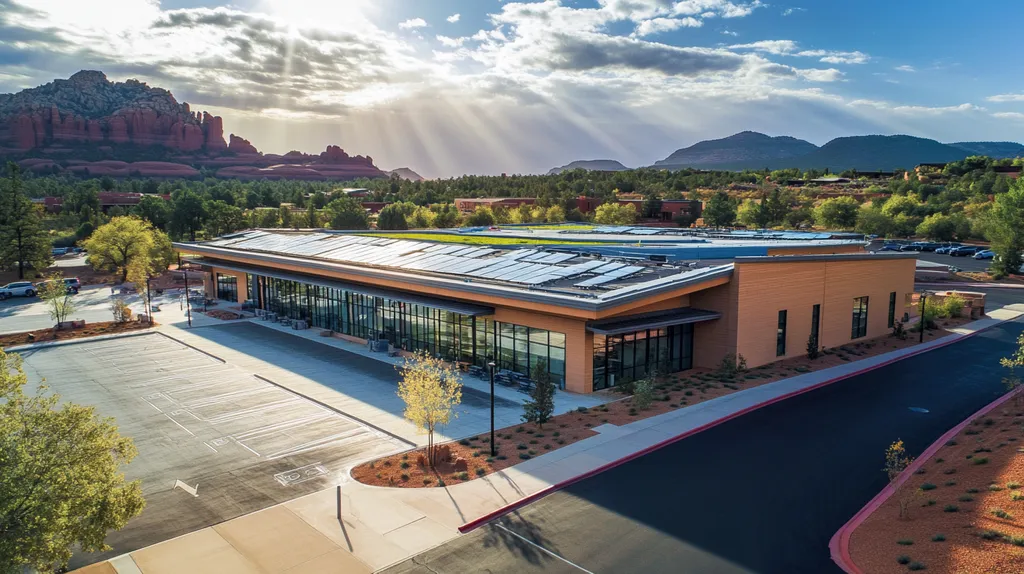Pest infestations cost U.S. businesses over $6.8 billion annually in repairs, with roofing systems serving as the primary entry point for 70% of commercial pest problems. Despite this clear threat, many facility managers overlook critical design elements that could prevent costly invasions.
From material selection and geometric considerations to compliance requirements and maintenance protocols, creating truly pest-resistant commercial roofs demands a comprehensive, systematic approach.
This actionable guide examines the key factors facility managers must consider when designing and maintaining pest-resistant roofing systems, with a focus on prevention, compliance, and long-term cost control.
SECTION 1: PERFORMANCE FACTORS
As pest infestations pose escalating threats to commercial properties, facility managers must stay ahead of these issues to safeguard their investments. Not only can pest problems lead to expensive repairs and lost revenue, but they can also jeopardize the health and safety of employees. According to the National Pest Management Association, nearly a quarter of businesses encounter pest-related complications each year. This underscores the importance of designing roofs that effectively resist pest intrusion.
Identifying Vulnerable Roof Components for Pest Intrusion
Understanding which roof components are most vulnerable to pest entry is crucial for prevention. Areas like seams, penetrations, and flashings are common targets for pests. For example, roof vents and drainage systems can be easy entry points for rodents and insects.
Regular inspections of these vulnerable components will help reveal any signs of pest activity. Cracks or gaps should be sealed immediately to prevent entry. Additionally, the choice of roof accessories, such as vents and hatches, plays a pivotal role in pest intrusion prevention.
Selecting durable materials with robust seals and ensuring proper installation is essential. Maintenance checks can further strengthen the resilience of these vulnerable areas over time.
Key Action Items
Evaluating Roof Material Resistance to Common Pests
Choosing the right roofing material is a key factor in a roof’s effectiveness against pests. Certain materials naturally deter pests, while others may inadvertently provide shelter or food sources. For instance, bird-proof roofing membranes can prevent unwanted avian nesting, and well-constructed metal roofs are less attractive to many types of insects.
Assessing the properties of roofing materials is vital. Materials such as rubber or TPO can attract moisture and create environments conducive to mold and pest infestations. Conversely, incorporating pest-repelling additives in materials can significantly improve resistance to infestations.
Selecting fire-resistant materials is also essential, as it reduces risks associated with pest-related fires. Prioritizing durable roofing materials offers a long-term strategy for investment protection while minimizing ongoing maintenance costs.
Key Action Items
Designing Roof Geometry to Minimize Pest Harborage
The design and geometry of a roof can significantly influence pest nesting and activity. For example, steeper roofs are less likely to collect debris, moisture, or organic matter, which are perfect habitats for pests. This kind of design creates a less inviting environment for rodents and insects.
Implementing slopes and efficient drainage systems is crucial for preventing standing water, a common attractant for pests. Roof designs that promote swift moisture removal improve not only pest resistance but overall roof durability.
Cleverly designed barriers can thwart larger pests, while strategically placed overhangs help keep pests away from walls. Effective roof geometry minimizes areas where pests can thrive, ultimately minimizing infestation risks.
Key Action Items
SECTION 2: FINANCIAL CONSIDERATIONS
The financial impact of designing a pest-resistant commercial roof is significant and cannot be ignored. Pest infestations not only lead to extensive damage but can also drain resources through costly repairs, reduced productivity, and potential health risks. While the initial costs of pest-resistant roofing materials may seem high, evaluating the long-term benefits can uncover considerable savings and risk mitigation. This section will delve into the cost-benefit analysis of materials, the importance of budgeting for preventive measures, and the potential savings from integrated pest management strategies.
Cost-Benefit Analysis of Pest-Resistant Roofing Materials
Investing in pest-resistant roofing materials is a smart financial decision that brings multiple advantages. Materials with pest-repellent chemical coatings can effectively thwart infestations, which not only prolongs the roof’s lifespan but also reduces repair costs over time.
Although the upfront costs may be greater than standard materials, the long-term savings from decreased maintenance and pest removal make this investment worthwhile. Enhanced property value is another key benefit, as buildings with effective pest control features tend to attract more buyers and sell for higher prices.
In essence, selecting the right roofing materials provides a valuable return on investment by limiting pest-related incidents and ensuring overall structural integrity.
Key Action Items
Budgeting for Preventive Roof Pest Control Measures
Implementing a budget for proactive pest control measures is critical for effective property management. Facility managers should earmark funds not just for the initial installation of pest-resistant roofs, but also for routine maintenance and ongoing monitoring.
Regular inspections and timely treatments can help nip minor pest issues in the bud, preventing them from evolving into serious problems. Establishing a dedicated pest control fund ensures that necessary interventions can be executed without delay.
Investing in professional pest management services, including routine inspections, can lead to substantial savings on future repairs. Collaborating with roofing experts familiar with pest prevention is also beneficial for smart budgeting.
Key Action Items
Projecting Long-Term Savings from Integrated Pest Management
Integrated Pest Management (IPM) offers a comprehensive approach to pest control that can lead to significant cost savings over time. This strategy combines biological controls, habitat modifications, and judicious use of pesticides, minimizing the dependence on chemicals.
By employing IPM principles, facilities can manage pest populations effectively, thus preserving building integrity without incurring excessive ongoing expenses. Establishing an IPM program can lead to reduced pest levels and the associated damage that comes with them.
Moreover, fewer pest infestations contribute to a healthier indoor climate, which can lower health-related costs and boost employee productivity. By focusing on IPM as part of a pest-resistant roofing strategy, businesses can achieve not only immediate financial goals but also support sustainable operational health in the long run.
Key Action Items
SECTION 3: COMPLIANCE REQUIREMENTS
Building a pest-resistant commercial roof is not merely a precaution; it is a legal obligation. Building codes often dictate specific pest management protocols, positioning the roof as an essential barrier against potential infestations. Non-compliance can lead to hefty fines and severe damage to both property and reputation.
Understanding Building Codes for Pest Exclusion in Roofing
Building codes are instrumental in establishing effective pest exclusion strategies. Many local regulations require that roofing materials create barriers to pests, particularly in areas known for high infestation risks. For instance, roofs may need to feature seamless materials to minimize entry points.
Facility managers should thoroughly review local building codes to identify specific compliance requirements. These codes might dictate the use of metal flashings or particular sealants designed to deter pests. Staying compliant can significantly limit pest access.
Moreover, awareness of local zoning laws is critical. Different zones may have unique standards linked to environmental conditions or historical pest issues. Knowledge of these laws can proactively prevent future pest infestations.
Key Action Items
Meeting Local and Federal Pest Control Regulations
Adhering to local and federal pest control regulations is increasingly essential for property owners. Compliance ensures roofing systems are not only pest-resistant but also legally sound, avoiding hefty fines and legal issues. The Environmental Protection Agency (EPA) specifies practices related to pest management that impact roofing maintenance.
Understanding these regulations equips facility managers to incorporate various pest-resistant features into roofing designs, such as non-toxic materials and methods aligned with integrated pest management principles.
Additionally, municipal guidelines may require regular inspections and adherence to specific standards. Conducting roof inspections can identify compliance issues early, enabling prompt resolutions. Proactive management of these regulations is crucial for ongoing compliance.
Key Action Items
Documentation and Reporting for Pest-Resistant Roof Compliance
Thorough documentation is crucial for demonstrating compliance with pest resistance requirements. Facility managers should keep detailed records of all roofing materials, warranties, and inspection reports. This documentation supports compliance assurance during regulatory inspections.
Scheduled reporting on roof conditions is necessary to track compliance efforts effectively. Results from regular inspections should be meticulously documented, showcasing the commitment to meeting pest-resistant standards.
Additionally, reporting compliance status to management can inform future decisions about maintenance or upgrades, particularly when advocating for funds to enhance pest-resistant features. Staying current with regulatory updates and adjusting documentation accordingly is essential.
Key Action Items
SECTION 4: RISK MANAGEMENT
Pest infestations can lead to severe structural damage in commercial roofs, resulting in costly repairs and service disruptions. Research shows that pest-related damage can account for as much as 20% of overall repair costs for buildings. For facility managers, understanding and managing these risks is essential to preserving the integrity of their buildings and protecting investments. This section will discuss how to assess structural damage risks, establish effective monitoring protocols, and create contingency plans for pest infestations.
Assessing Pest-Related Structural Damage Risks
Identifying the specific types of pests that can cause structural harm is crucial for facility managers. Rodents and insects often invade roof spaces, creating entry points that compromise the roofing material’s integrity. Regular assessments should include checking for droppings, gnaw marks, and nesting materials—signs of an active infestation.
Certain building designs are more prone to pest damage. For instance, flat roofs with poor drainage can lead to pooled water, attracting insects. Conducting an initial risk assessment should evaluate these design weaknesses and any existing structural flaws that may heighten vulnerability.
Using technology like moisture detectors and thermal imaging cameras can strengthen risk assessments by identifying potential problem areas before they escalate into infestations. Documenting findings in a detailed risk assessment report informs future inspections and preventive measures.
Key Action Items
Developing a Roof Inspection and Monitoring Protocol
A comprehensive roof inspection and monitoring protocol are essential for early pest detection. Facility managers should schedule regular inspections, ideally at least twice a year, focusing on visible damage as well as potential entry points and conditions that could welcome pests.
Using checklists during inspections ensures thorough assessment, covering key areas like roof penetrations, flashings, and gutters. This structured approach maintains consistent inspection quality and a reliable tracking system.
Incorporating real-time monitoring systems with sensors and alarms can further enhance pest detection. These systems can alert personnel to unusual conditions or pest activity, facilitating swift action and minimizing damage.
Key Action Items
Implementing Contingency Plans for Pest Infestations
Despite thorough monitoring, pest infestations can occur. Therefore, having a robust contingency plan is vital. This plan should clearly define actions to take upon discovering a pest issue, including staff roles and communication strategies.
Establishing relationships with pest control experts ensures rapid response to infestations, minimizing business disruptions. Understanding the extermination process and estimated remediation timeframes helps manage expectations during an infestation.
Training staff to recognize signs of pest activity can bolster early detection. Regular training sessions equip employees to identify common pests and respond appropriately. Documenting each pest incident helps refine future plans and guide preventative actions.
Key Action Items
SECTION 5: OPERATIONAL PROCEDURES
Proactive operational procedures are vital for maintaining pest-resistant commercial roofs. Pests can introduce significant health risks, property damage, and costly repairs; in fact, about 70% of pest infestations in commercial properties start from the roof. Therefore, effective maintenance and thorough staff training are essential for minimizing these risks. This section delves into routine roof maintenance, the integration of Integrated Pest Management (IPM) practices, and the critical role of staff training in identifying and responding to pests.
Routine Roof Maintenance to Prevent Pest Access
Regular roof maintenance serves as the first line of defense against unwanted pest entry. Facilities should establish a consistent schedule for inspections and repairs, focusing on identifying cracks, damaged seams, and any debris that could attract pests.
Securely fastened flashing is essential, as loose materials can easily become entry points for rodents and insects. Additionally, ensuring that drainage systems are free of clogs will prevent standing water, a common attraction for pests. Installing screens over vents and exhaust systems can also block pests while allowing necessary air circulation.
Moreover, maintaining well-trimmed vegetation around roof edges prevents pests from using nearby plants as access routes. Documenting all maintenance procedures helps track issues over time and informs future strategy adjustments.
Key Action Items
Coordinating IPM Practices with Facility Operations
Integrating Integrated Pest Management (IPM) into daily operations is key to achieving long-term pest resistance. IPM employs strategies like habitat modification, pest monitoring, and targeted interventions tailored to each building’s unique vulnerabilities.
For instance, proactively sealing off entry points can greatly control pest populations and prevent infestations. Regular monitoring is crucial for spotting early signs of pests before they become a more significant issue. Collaboration with pest control professionals helps develop tailored IPM plans that work in sync with facility operations.
Effective communication between roofing teams and pest management experts is essential for implementing cohesive strategies. This collaboration ensures operational practices, such as waste management, minimize conditions that attract pests.
Key Action Items
Training Staff on Pest Identification and Response
Employee training plays a crucial role in fostering a pest-resistant environment. Staff should learn to identify signs of pests, such as droppings, nests, or signs of damage, as early recognition allows for prompt action to avoid infestations.
Regular training sessions can reinforce pest awareness among staff. Interactive scenarios can help employees practice reporting pest issues effectively, promoting a culture of vigilance and ownership throughout the organization.
Furthermore, educating staff about maintaining cleanliness is important, particularly concerning food waste and clutter, which can attract pests. Empowering employees with knowledge encourages proactive pest management behaviors.
Key Action Items
SECTION 5: OPERATIONAL PROCEDURES
Implementing proactive operational procedures is vital for keeping commercial roofs pest-resistant. Pests can pose serious health risks, cause property damage, and lead to costly repairs. In fact, statistics reveal that approximately 70% of pest infestations in commercial properties begin on the roof. Therefore, routine maintenance and thorough staff training are essential for minimizing these risks. This section will focus on effective maintenance practices, the integration of Integrated Pest Management (IPM), and the importance of training staff to identify and respond to pest activities.
Routine Roof Maintenance to Prevent Pest Access
Consistent roof maintenance is the first barrier against pests gaining entry. Facilities should establish a regular schedule for thorough inspections and necessary repairs. Technicians need to look for cracks, damaged seams, and any debris that might offer harborage for pests.
Flashing must be securely attached, as loose sections present convenient access points for insects and rodents. Ensuring that drainage systems are free of clogs is equally important, as standing water can attract various pests. Moreover, installing screens over vents and exhausts will help shield against unwanted entry while still allowing vital airflow.
Additionally, keeping vegetation trimmed away from roof edges can deter pests from using nearby plants as pathways. Documenting all maintenance actions is crucial for tracking persistent issues and refining future strategies.
Key Action Items
Coordinating IPM Practices with Facility Operations
Integrating Integrated Pest Management (IPM) into daily operations is essential for sustainable pest control. IPM incorporates a variety of strategies, including habitat modification, active pest monitoring, and strategic interventions tailored to a facility’s specific vulnerabilities.
For instance, proactively sealing potential entry points can significantly reduce pest populations. Additionally, routine monitoring helps identify early pest activity before it escalates into a larger issue. Facility managers should collaborate closely with pest control specialists to create customized IPM strategies.
Effective coordination between roofing teams and pest management professionals is crucial. This teamwork ensures operational practices—like efficient waste management—are optimized to help deter pests.
Key Action Items
Training Staff on Pest Identification and Response
Training employees is vital for fostering a culture of pest resistance. Staff should be educated to recognize signs of pest activity—such as droppings, nests, or physical damage. Early recognition allows for swift intervention, greatly reducing the risk of an infestation developing.
Periodic training sessions can enhance staff awareness and responsiveness. Simulated scenarios encourage employees to practice effective reporting, promoting vigilance throughout the facility.
Moreover, educating staff on the importance of cleanliness is critical. Understanding how food waste and clutter attract pests reinforces proactive behaviors in pest management.
Key Action Items
The Bottom Line
With pest-related damages costing U.S. businesses over $6.8 billion annually, the importance of pest-resistant commercial roofing cannot be overstated.
Success requires a comprehensive approach integrating smart material selection, rigorous maintenance protocols, and proactive monitoring systems.
Facilities that implement the strategies outlined in this guide typically see a 70% reduction in pest-related issues and achieve up to 40% longer roof lifespans.
Building codes and regulations continue to evolve, making pest resistance an increasingly critical component of commercial roofing compliance.
The future of commercial roofing lies in integrated systems that combine advanced materials, smart monitoring, and sustainable pest management practices to protect valuable assets and ensure operational continuity.
FREQUENTLY ASKED QUESTIONS
Q. What commercial roof components are vulnerable to pests?
A. Vulnerable components include seams, penetrations, and flashings, where pests can enter. Roof vents and drainage systems often attract rodents and insects, so regular inspections and sealing cracks are crucial for prevention.
Q. How much do pest-resistant roofing materials cost?
A. Although initial costs for pest-resistant materials may be higher, the long-term savings from fewer repairs and maintenance make these materials a smart investment. Enhanced property values from effective pest control features further justify their higher price.
Q. Which building codes govern pest exclusion on roofs?
A. Local building codes often require seamless materials and specific flashing types to deter pests. Facility managers should review regulations to ensure compliance and help avoid penalties while effectively limiting pest access.
Q. How can I assess pest-related structural damage risks?
A. Conduct bi-annual assessments for signs like droppings or nests. Identifying vulnerable designs, such as flat roofs with poor drainage, can help pinpoint areas prone to pest damage and enable proactive measures.
Q. What routine maintenance is essential for commercial roofs?
A. Regular inspections should focus on identifying cracks and debris, ensuring that flashing is secure and drainage systems are clear. Keeping vegetation trimmed away reduces pest access points and maintaining documentation helps track issues.
Q. How often should staff be trained on pest identification?
A. Staff should undergo regular training to recognize signs of pest activity. Periodic sessions that include practical reporting exercises promote a culture of vigilance and ensure all employees know how to act on potential pest sightings.
Q. What steps can be taken for effective pest monitoring?
A. Implementing real-time monitoring systems and scheduling regular inspections are essential. These strategies allow for early detection, enabling swift action before potential infestations escalate into larger problems that threaten the roof’s integrity.










